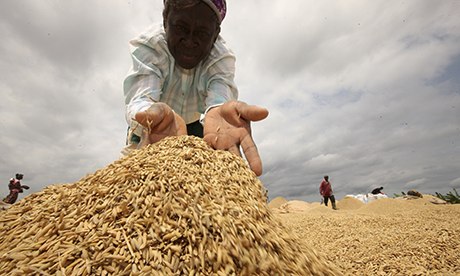 [EarthInsight 20 Dec 2013 by Nafeez Ahmed] — Industrial agriculture could be hitting fundamental limits in its capacity to produce sufficient crops to feed an expanding global population according to new research published in Nature Communications.
[EarthInsight 20 Dec 2013 by Nafeez Ahmed] — Industrial agriculture could be hitting fundamental limits in its capacity to produce sufficient crops to feed an expanding global population according to new research published in Nature Communications.".
. . we found widespread deceleration in the relative rate of increase of average yields of the major cereal crops during the 1990–2010 period in countries with greatest production of these crops, and strong evidence of yield plateaus or an abrupt drop in rate of yield gain in 44% of the cases, which, together, account for 31% of total global rice, wheat and maize production."
"A concern is that despite the increase in investment in agricultural R&D and education during this period, the relative rate of yield gain for the major food crops has decreased over time together with evidence of upper yield plateaus in some of the most productive domains."